Abstract
Pigeons' responding was reinforced on a multiple schedule consisting of two two-link chain schedules presented in regular alternation. Responding in initial links (always variable-interval 60-s) produced a key-color change and access to a terminal link. The terminal link for one chain provided food after a fixed delay (fixed-interval or fixed-time); the terminal link for the other provided food after a variable delay (variable-interval or variable-time). The average duration of the terminal-link schedules was varied across conditions, but in every condition the arithmetic mean of the variable-delay terminal-link schedule was equal to the duration of the fixed delay. Response rates were higher in the initial links of the chains with the variable-delay terminal links. Response-decreasing operations (satiation, extinction) were used after performances reached asymptote. Response rates maintained by access to variable-delay terminal links tended to be more resistant to change than were rates maintained by access to fixed-delay terminal links. These results are consistent with the preference for variable- over fixed-interval terminal links observed with concurrent-chains schedules, suggesting (1) that immediacy of reinforcement influences the conditioned reinforcing potency of access to a terminal link and (2) that choice in concurrent chains and resistance of responding to change may be manifestations of the same effect of reinforcement.
Keywords: response strength, conditioned reinforcer value, resistance to change, immediacy of reinforcement, chain schedules, aperiodicity of reinforcement, satiation, extinction, key peck, pigeon
Full text
PDF
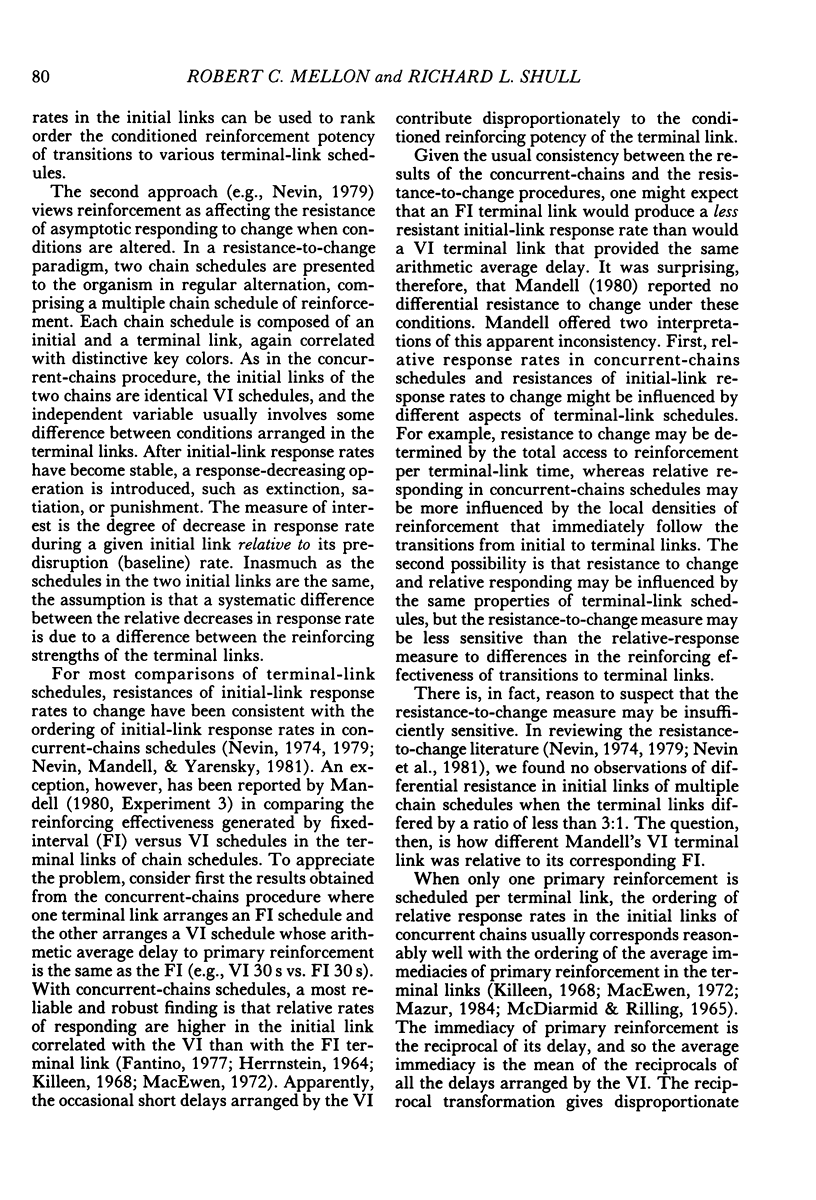
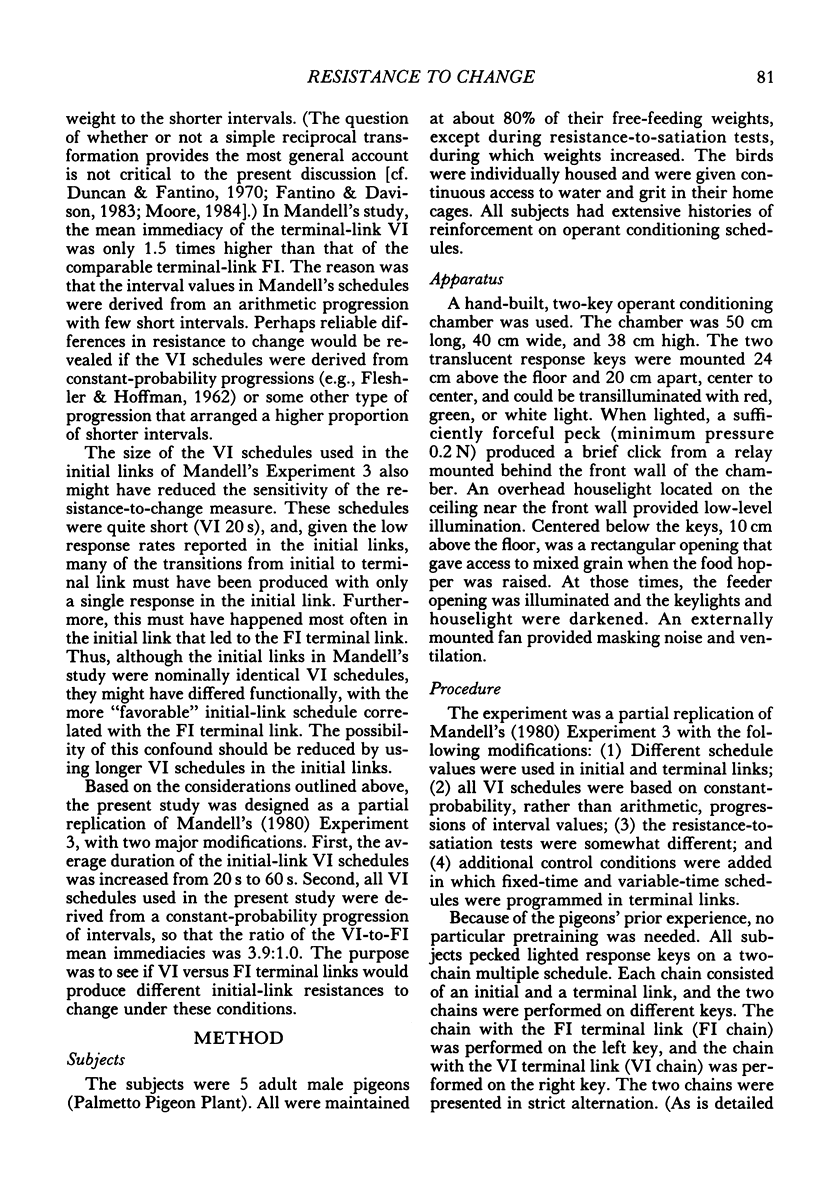
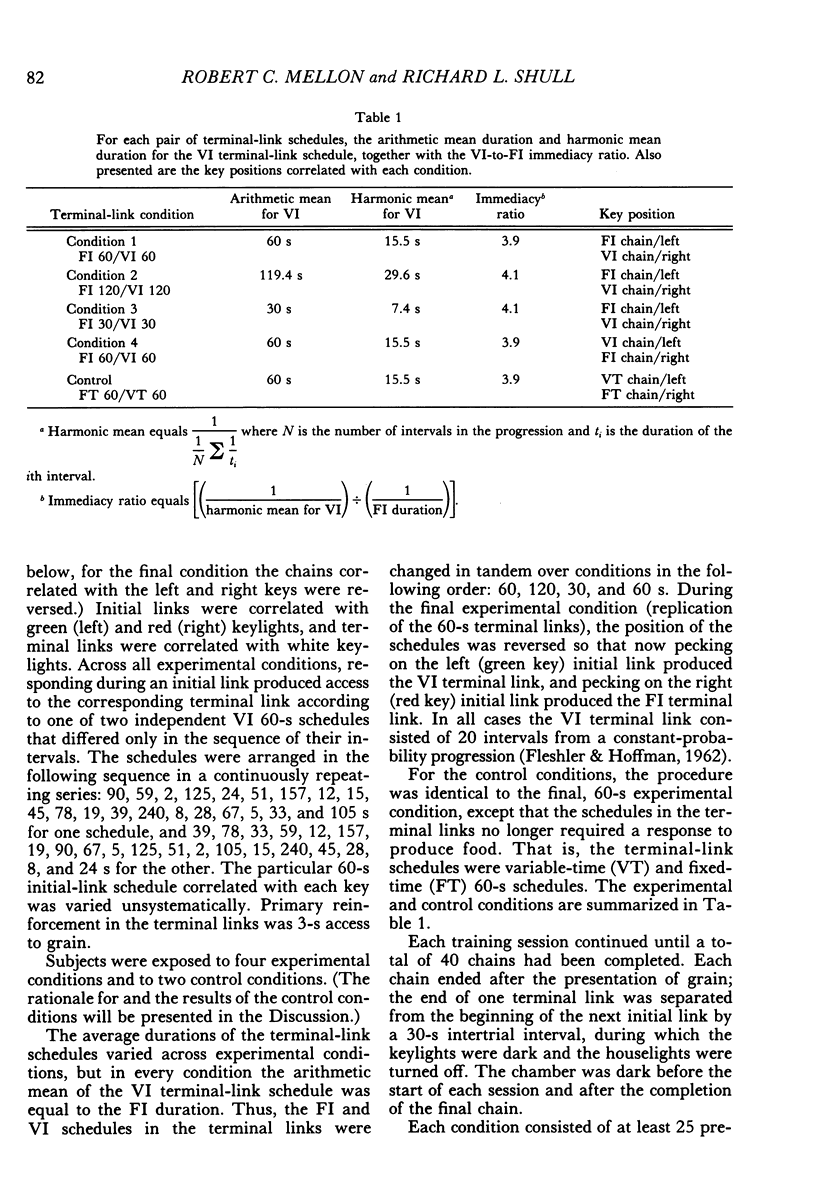
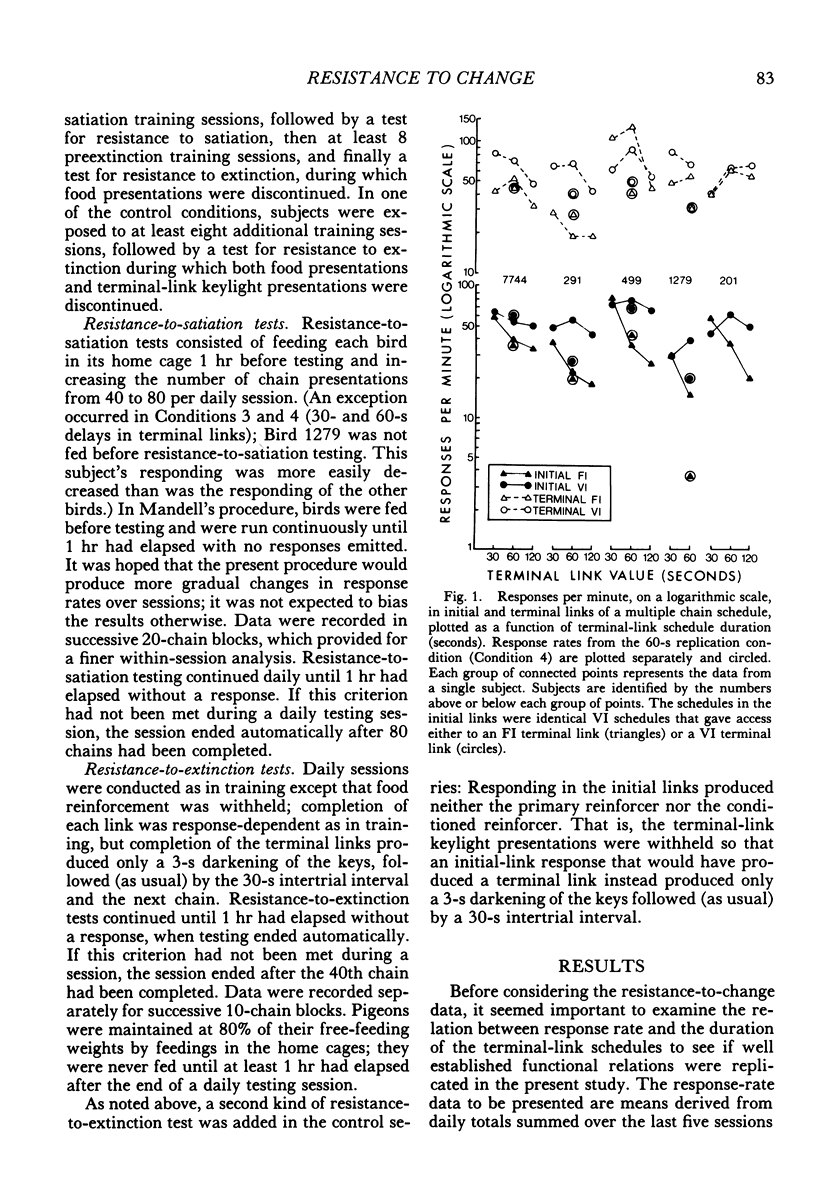


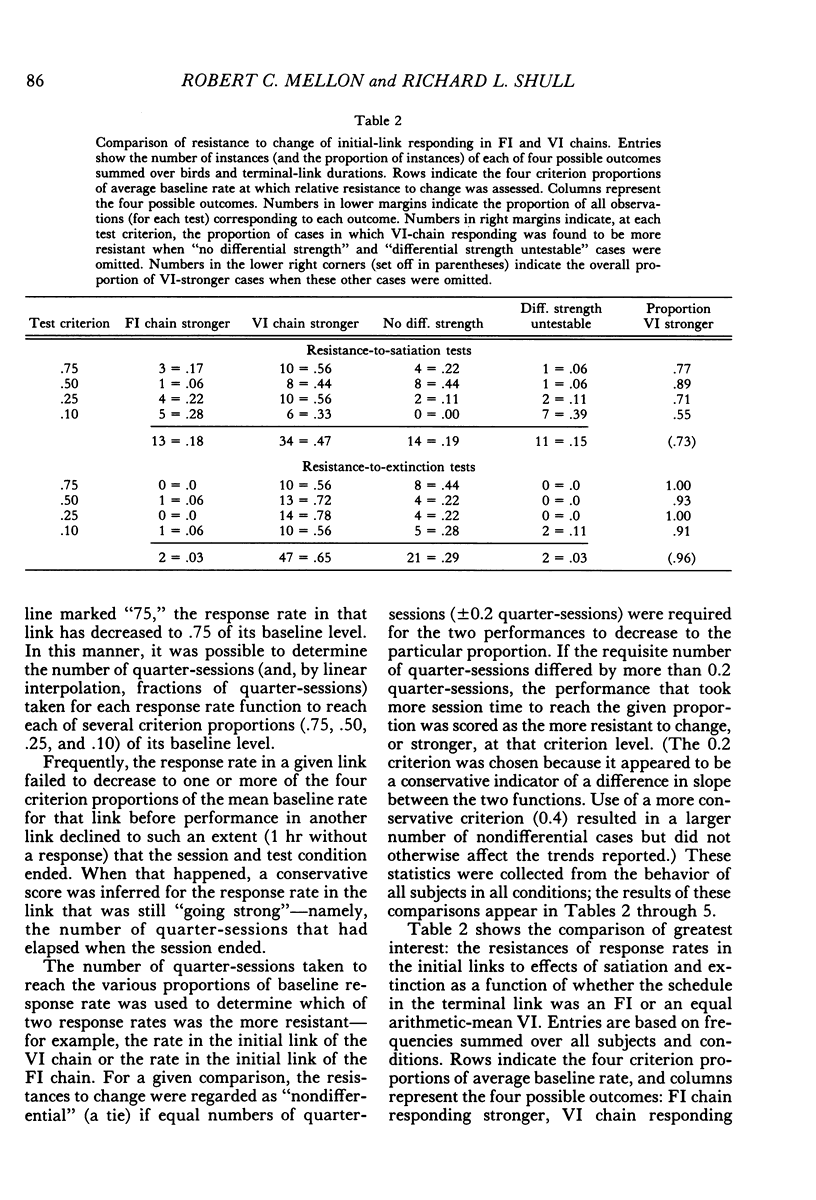
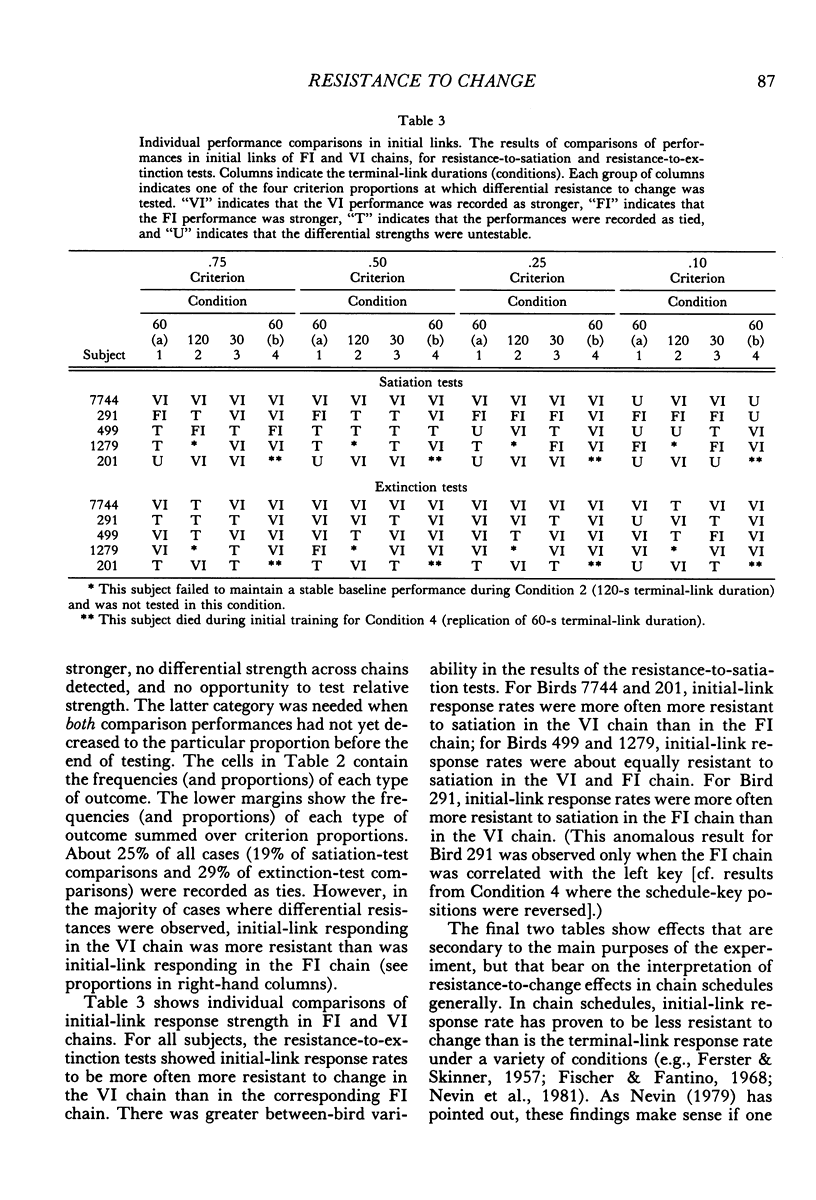

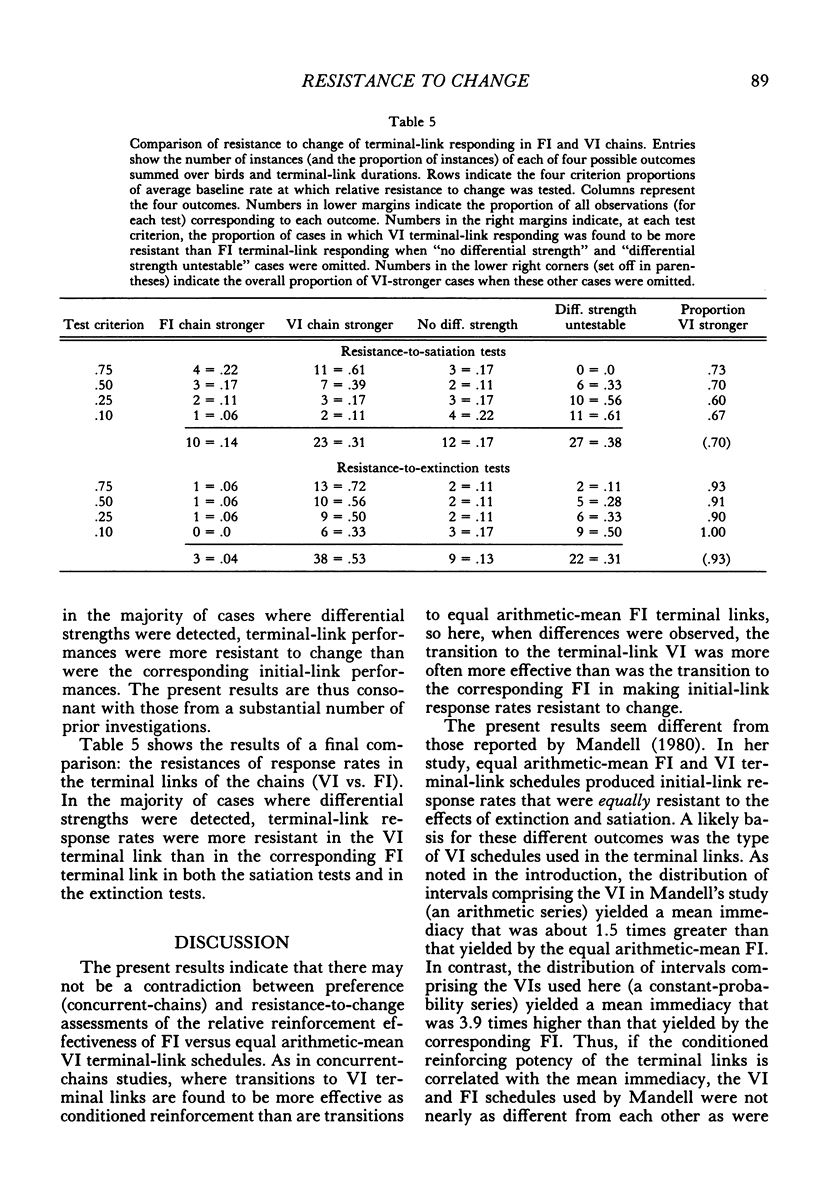



Selected References
These references are in PubMed. This may not be the complete list of references from this article.
- Chung S. H., Herrnstein R. J. Choice and delay of reinforcement. J Exp Anal Behav. 1967 Jan;10(1):67–74. doi: 10.1901/jeab.1967.10-67. [DOI] [PMC free article] [PubMed] [Google Scholar]
- Davison M. C. Preference for mixed-interval versus fixed-interval schedules. J Exp Anal Behav. 1969 Mar;12(2):247–252. doi: 10.1901/jeab.1969.12-247. [DOI] [PMC free article] [PubMed] [Google Scholar]
- Duncan B., Fantino E. Choice for periodic schedules of reinforcement. J Exp Anal Behav. 1970 Jul;14(1):73–86. doi: 10.1901/jeab.1970.14-73. [DOI] [PMC free article] [PubMed] [Google Scholar]
- FLESHLER M., HOFFMAN H. S. A progression for generating variable-interval schedules. J Exp Anal Behav. 1962 Oct;5:529–530. doi: 10.1901/jeab.1962.5-529. [DOI] [PMC free article] [PubMed] [Google Scholar]
- Fantino E., Davison M. Choice: Some quantitative relations. J Exp Anal Behav. 1983 Jul;40(1):1–13. doi: 10.1901/jeab.1983.40-1. [DOI] [PMC free article] [PubMed] [Google Scholar]
- Fischer K., Fantino E. The dissociation of discriminative and conditioned reinforcing functions of stimuli with changes in deprivation. J Exp Anal Behav. 1968 Nov;11(6):703–710. doi: 10.1901/jeab.1968.11-703. [DOI] [PMC free article] [PubMed] [Google Scholar]
- HERRNSTEIN R. J. APERIODICITY AS A FACTOR IN CHOICE. J Exp Anal Behav. 1964 Mar;7:179–182. doi: 10.1901/jeab.1964.7-179. [DOI] [PMC free article] [PubMed] [Google Scholar]
- Herrnstein R. J. On the law of effect. J Exp Anal Behav. 1970 Mar;13(2):243–266. doi: 10.1901/jeab.1970.13-243. [DOI] [PMC free article] [PubMed] [Google Scholar]
- Hursh S. R., Fantino E. Relative delay of reinforcement and choice. J Exp Anal Behav. 1973 May;19(3):437–450. doi: 10.1901/jeab.1973.19-437. [DOI] [PMC free article] [PubMed] [Google Scholar]
- KELLEHER R. T., GOLLUB L. R. A review of positive conditioned reinforcement. J Exp Anal Behav. 1962 Oct;5:543–597. doi: 10.1901/jeab.1962.5-s543. [DOI] [PMC free article] [PubMed] [Google Scholar]
- Killeen P. On the measurement of reinforcement frequency in the study of preference. J Exp Anal Behav. 1968 May;11(3):263–269. doi: 10.1901/jeab.1968.11-263. [DOI] [PMC free article] [PubMed] [Google Scholar]
- Macewen D. The effects of terminal-link fixed-interval and variable-interval schedules on responding under concurrent chained schedules. J Exp Anal Behav. 1972 Sep;18(2):253–261. doi: 10.1901/jeab.1972.18-253. [DOI] [PMC free article] [PubMed] [Google Scholar]
- Mandell C. Response strength in multiple periodic and aperiodic schedules. J Exp Anal Behav. 1980 Mar;33(2):221–241. doi: 10.1901/jeab.1980.33-221. [DOI] [PMC free article] [PubMed] [Google Scholar]
- Moore J. Choice and transformed interreinforcement intervals. J Exp Anal Behav. 1984 Sep;42(2):321–335. doi: 10.1901/jeab.1984.42-321. [DOI] [PMC free article] [PubMed] [Google Scholar]
- Nevin J. A. Response strength in multiple schedules. J Exp Anal Behav. 1974 May;21(3):389–408. doi: 10.1901/jeab.1974.21-389. [DOI] [PMC free article] [PubMed] [Google Scholar]


